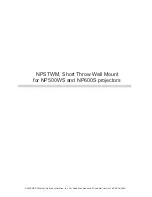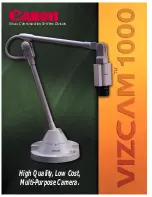
to fair, at best, with a 480i HDMI input.
Here it clearly stumbled on some of my
standard tests for jagged edges.
The problem appears to originate in
the JVC’s 480i-to-480p
deinterlacing. To check for
this, I fed the projector the
same material in 480p
HDMI from a Toshiba HD-
XA2 HD DVD player. The
latter is equipped with a Sil-
icon Optix HQV REON
processor, which we know
to have outstanding 480i-to-
480p deinterlacing. The re-
sult: all of my jagged edge
tests now looked flawless on
the JVC.
This result suggests you
should avoid feeding the
JVC a 480i HDMI source.
Why the projector’s deinter-
lacing of 480i-to-480p is
better in component than in
HDMI remains a mystery.
But it is. Fortunately, I can’t
think of a compelling reason
to use an HDMI source at
480i.
The JVC de-interlaced
1080i program material
(both film and video) di-
rectly to 1080p, as it should.
But it did not recognize 3/2
pulldown in a 1080i film
source. While the latter lim-
itation was quite visible in
test patterns, I never saw any
evidence of it with real
1080i program material.
Most of the criticism of past LCD and
LCoS projectors has focused on their
blacks, with good reason. But the LCD
and LCoS projectors I’ve reviewed be-
fore have also had a tendency to look a
little faded on bright scenes as well,
which reduced their punch and dimen-
sionality. This effect is subtle on the best
of these projectors, but never completely
absent. Many of these displays were
equipped with auto irises.
I noted this in my Short Take report
on the JVC as well, but I also observed
that the JVC suffered less from this bright
scene fading than most LCD and LCoS
designs I’ve seen, even those
that like the JVC don’t use
an iris. A dynamic iris can
greatly improve the depth of
a projector’s blacks in dark
scenes, but once it opens up
on a bright scene you’re left
largely with the naked, na-
tive contrast of the imaging
chip and light engine.
While such fading isn’t
entirely absent in this new
JVC design, I have found it
to be more and more diffi-
cult to spot, particularly
since the Sharp XV-Z20000
DLP was sent back to its
maker and the opportunity
for additional A/B compar-
isons thereby eliminated. I
saw it rarely before; now it
doesn’t bother me at all.
While some bright scenes
initially looked a bit more
saturated and three-dimen-
sional on the Sharp com-
pared to the JVC, I now find
that the JVC’s image, partic-
ularly on good high-defini-
tion material, offers plenty of
depth and dimensionality.
The JVC is very quiet in
its Normal lamp mode, and
only slightly louder in High.
It’s not as quiet as the Sony
Pearl or Mitsubishi HC5000,
but quieter than the Sharp XV-Z20000.
Its noise is also pitched fairly low, making
it less intrusive than the usual high fre-
quency, rushing air sound.
While I didn’t use the JVC’s Dynamic
Noise Reduction for serious viewing
and testing, it was very effective. At a set-
ting of 11 out of 30 it virtually elimi-
nated some annoying grain/noise in the
standard DVD transfer of
Star Trek: Insur-
rection
. It made the image far more
watchable, and did
not
make it soft. Each
increased step in NR is subtle, making it
a very effective tool for improving mar-
ginal transfers.
I noted earlier that when the JVC re-
ceives a 1080p/24 source, such as the na-
tive video from a Blu-ray Disc, it
quadruples it to a frame rate of 96fps and
displays it without the usual motion jud-
der of 3/2 pulldown present in 24fps,
film-based material displayed in video
format at 1080p/60. In theory this
should result in smoother motion. And
that’s just what I saw. But the improve-
ment is not immediately obvious; 3/2
pulldown judder is something we’ve all
lived with so long that most of us can
tune it out. It’s nearly impossible to spot
on rapid motion. But if you look care-
fully you’ll see improved smoothness in
slow pans, zooms, and the sort of leisurely
motion that hides motion blur in displays
prone to it.
While I did see some very subtle mo-
tion blur in fine details moving across the
screen, I see the same effect from DLPs.
The only modern display technology
that can do better on this (sometimes) is
plasma.
While the subjective color of the JVC
was excellent, some of its primary (red,
green, and blue) and secondary colors
(yellow, cyan, and magenta) were a little
oversaturated. Green glowed too brightly
on sunlit foliage. Red was also a little in-
tense, though unlike green, a bit too
much fire in the reds can often be pleas-
ing—provided that flesh tones look
right. And the JVC’s post-calibrated flesh
tones were just fine, as long as the pro-
gram source allowed them to be (there’s
a lot of color processing going on in
today’s films).
The color temperature was reasonably
accurate in the Middle Color Temp. set-
ting, but minor tweaking in the user
controls (with appropriate calibration
tools, of course) produced an even better
and more accurate result. But it did take
different settings for the best results in
each of the two lamp modes. Fortunately,
ultimate
AV

























